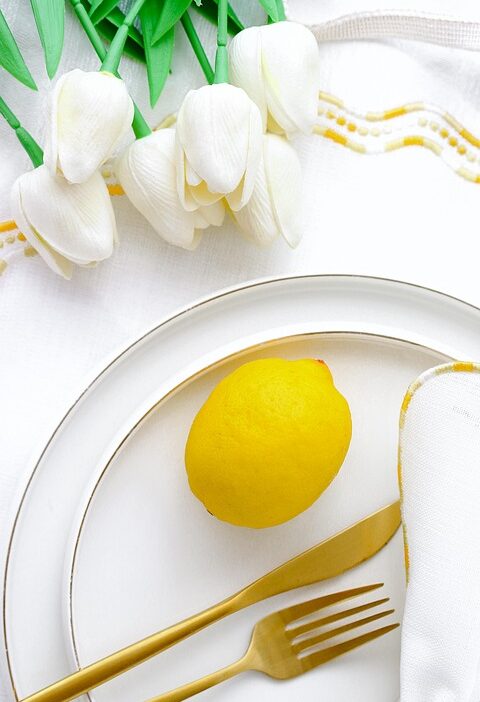In the culinary world, presentation is not just about aesthetics; it’s an essential part of the dining experience. The journey from kitchen to canvas involves transforming a simple dish into a visual feast that entices the senses before the first bite is taken. Here, we explore the art of plating, revealing secrets that elevate a meal from everyday to extraordinary.
The Importance of Plating
Plating is an art as much as it is a science. It shapes the way diners perceive food, triggering their appetites even before tasting. A well-plated dish not only enhances visual appeal but also communicates the chef’s vision and creativity. It engages the diner’s senses, creating a memorable experience.
The Essentials of Stunning Plating
1. Color Contrast and Harmony
Colors play a pivotal role in plating. The use of contrasting colors can make a dish vibrant and appealing. For instance, a bright green herb puree can add a refreshing touch to a plate of roasted vegetables. Additionally, harmony among colors can reflect the ingredients’ freshness and quality. Aim for a balance that allows each component to shine, using the color wheel as your guide.
2. Texture Variety
Diners appreciate texture as much as they do flavor and appearance. Combining various textures on a plate—crunchy, creamy, soft, and chewy—creates an engaging experience. Think about incorporating elements like crispy fried shallots, smooth purées, or vibrant microgreens to add depth.
3. Shape and Structure
The shape of your plate is as vital as its contents. Opt for unique plates, bowls, or even wooden boards that enhance the meal’s theme. Building height and layers on the plate can create intrigue—stacking ingredients or using techniques like quenelling purées can elevate the visual impact.
4. Portion Size and Balance
Maintaining a proper balance between different elements is key. A crowded plate can overwhelm the diner, while too much empty space can make a dish feel sparse. Aim for a harmonious composition that allows each ingredient to breathe while still contributing to the overall picture.
5. Use of Negative Space
Negative space refers to the unoccupied areas on the plate. Skillful use of negative space can increase the dish’s visual appeal, drawing attention to the focal point of your composition. This technique adds elegance and sophistication, providing a clean and curated look.
Techniques for Perfect Plating
1. Layering
Layering is a classic plating technique that adds dimension. Start with a base (like grains or a sauce), add the main protein or vegetable, and top with garnishes to create an eye-catching structure.
2. Swooshing Sauces
A playful swoosh of sauce can add flair and dynamism to a plate. Use the back of a spoon to create artistic lines or abstract patterns. This technique not only provides flavor but also creates visual excitement.
3. Garnishing
Garnishes should be more than just an afterthought; they must complement the dish. Fresh herbs, edible flowers, or a sprinkle of spices can enhance flavor and improve presentation. Ensure that garnishes align with the dish’s overall theme and flavor profile.
4. Artistic Drizzle
For desserts, a drizzle of chocolate or fruit coulis can add an artistic flair. Use a squeeze bottle for precision, creating intricate designs that enhance the dish’s visual appeal.
Conclusion
Mastering the art of plating is a journey that requires practice, creativity, and an understanding of your ingredients. By focusing on elements like color, texture, and balance, you can transform simple dishes into stunning presentations that delight the eye and palate. Remember, each plate is a canvas—let your culinary imagination soar and create masterpieces that invite diners to not only taste but experience each bite fully. Whether you’re in a professional kitchen or whipping up dinner at home, don’t underestimate the power of a beautifully plated dish. Your culinary creations deserve to be celebrated!



